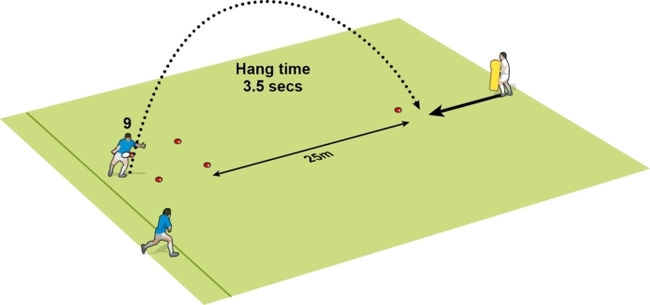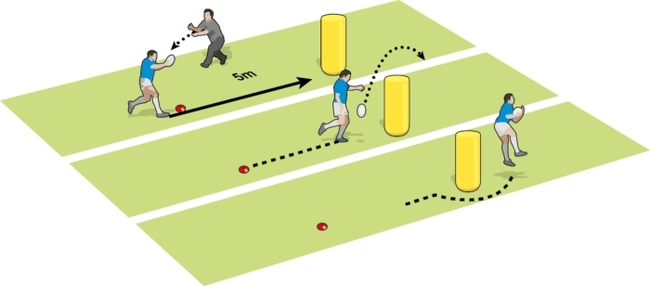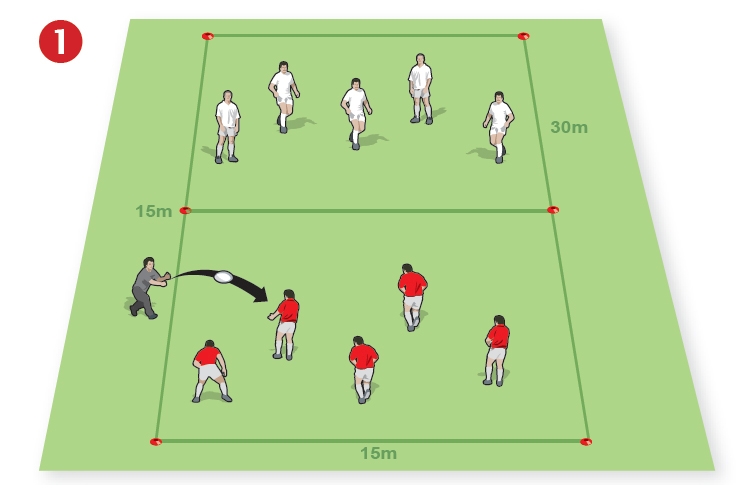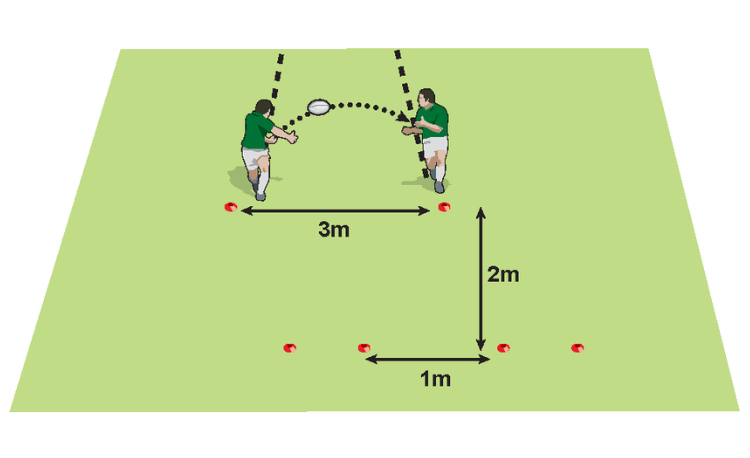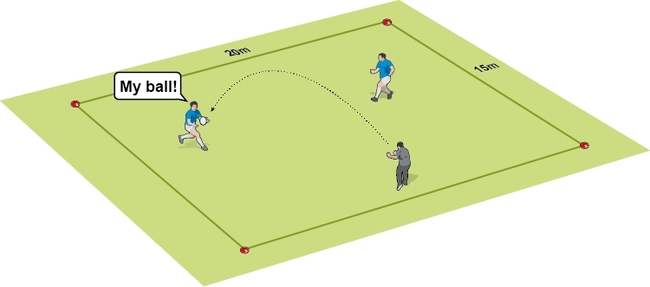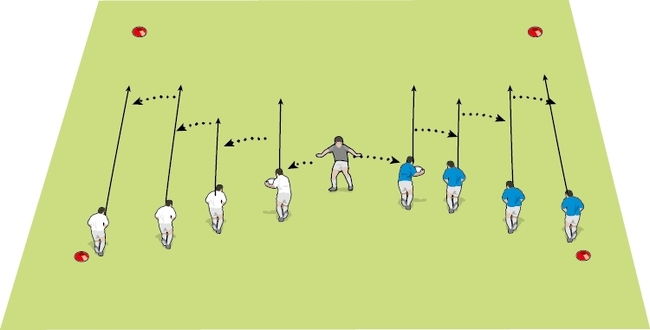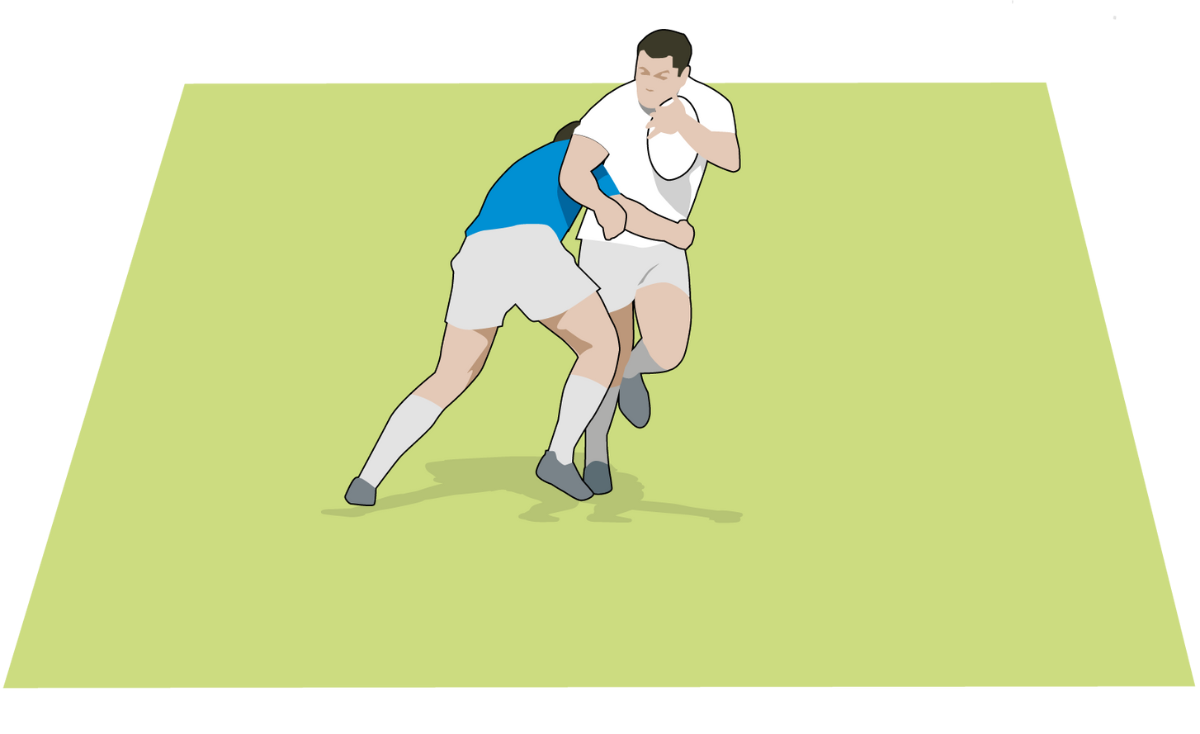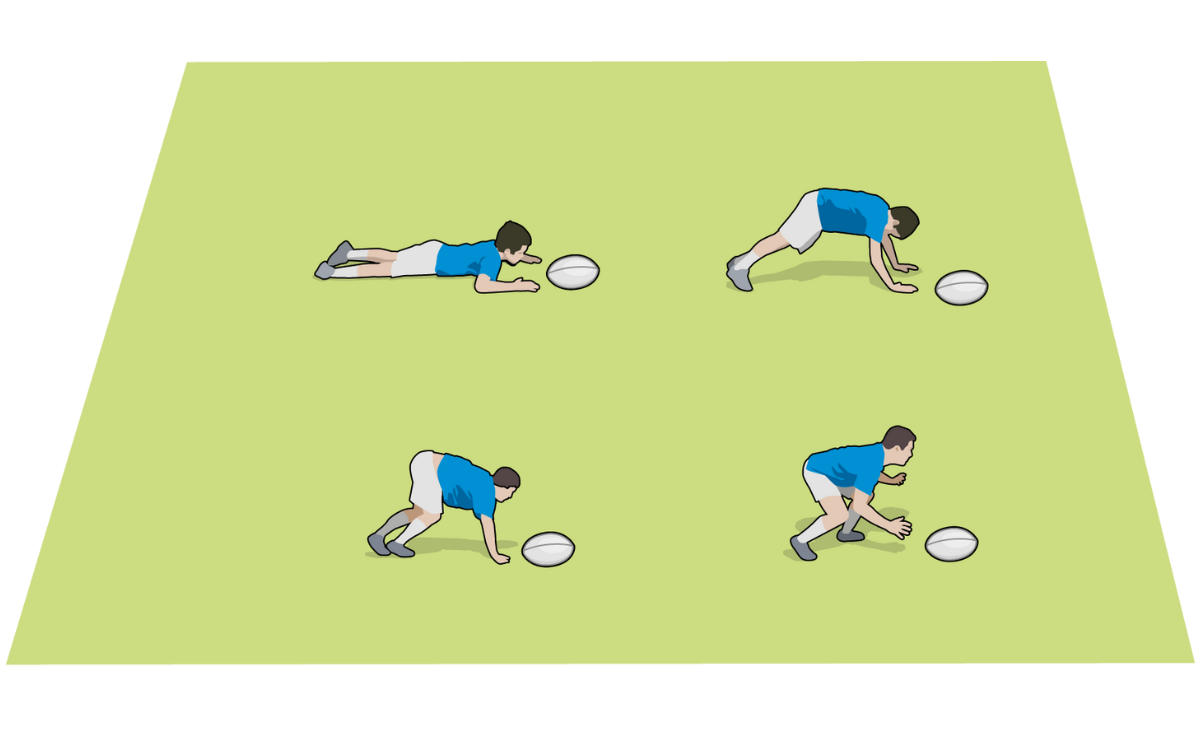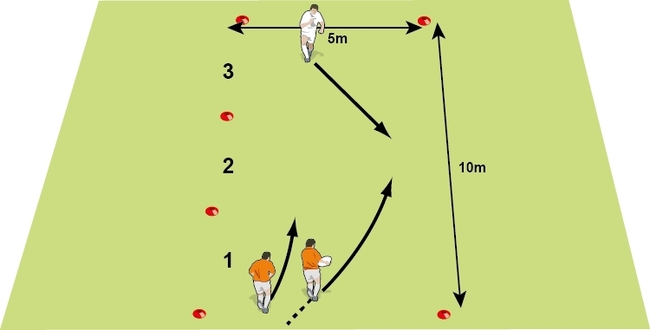Recover your own kick
Kicking & Catchingby Rob Appleyard
Kicking the ball doesn’t have to mean conceding possession. In the final part of our series on catching, we look at how to win back the ball from two main types of kick – the box kick and “chip and chase”.

What are your our own kick recovery tactics?
You can use “contestable” kicks for different reasons, depending on field position. First, let’s split the field into three zones: our 22m area, between the 22s, and their 22m zone.
When we want to exit our 22, we don’t always want to kick for touch because otherwise, we’ll give the opposition a lineout. Running the ball is risky, however, and we will find ourselves under even more pressure if we aren’t successful.
By sending up a box kick or using a chip kick, we can land the ball into a less defended area. With a good chase and catching technique, we can get under the ball to win it back for ourselves.
Box kicks have a certain amount of “hang time”. By experimenting with our 9s, we can work out how far they should kick it to give the chasers a chance to get under the ball. At pro level we reckon a hang time of 3.5s, with a 25m chase, is the optimum combination. See my drill on practising the box kick exit.
Between the 22m lines, your team might find their progress hampered by a defence that has good line speed. By using a chip kick, you can pressurise that defence.
The kick can drop into that inviting area behind the onrushing defenders and in front of the covering full back. Your centres can time their runs to race onto the kick, whilst their opposite numbers are forced to turn. Use my “chip and chase” exercise to practise this.
In their 22m area, you can kick to score. Defences tend to speed up near their own try line and wingers don’t cover in behind, so there are plenty of spaces for chip kicks and even cheeky box kicks.
The grubber is another kick that teams should have in their locker. Though both exercises on the following pages rely on well-executed kicks, we’re focusing our coaching on a good chase so that the player can challenge for the ball. The best chasers never take their eyes off the ball, so don’t lose vital moments trying to relocate it as they sprint forward. They’re prepared to jump forward to catch the ball over their shoulder.
They also time their runs, so that they’re moving forward before the ball is struck but whilst staying onside. These players will know how the kicker shapes to kick and therefore when to accelerate.
Vary catching and chasing warm-ups by using a tennis ball hit from a racket. You can easily fire up high balls for them to chase, and they’ll have less margin for error because the ball is smaller and more likely to bounce out of “hard” hands.

What are your our own kick recovery tactics?
You can use “contestable” kicks for different reasons, depending on field position. First, let’s split the field into three zones: our 22m area, between the 22s, and their 22m zone.
EXIT STRATEGY
When we want to exit our 22, we don’t always want to kick for touch because otherwise, we’ll give the opposition a lineout. Running the ball is risky, however, and we will find ourselves under even more pressure if we aren’t successful.
By sending up a box kick or using a chip kick, we can land the ball into a less defended area. With a good chase and catching technique, we can get under the ball to win it back for ourselves.
Box kicks have a certain amount of “hang time”. By experimenting with our 9s, we can work out how far they should kick it to give the chasers a chance to get under the ball. At pro level we reckon a hang time of 3.5s, with a 25m chase, is the optimum combination. See my drill on practising the box kick exit.
BEAT THE RUSH DEFENCE
Between the 22m lines, your team might find their progress hampered by a defence that has good line speed. By using a chip kick, you can pressurise that defence.
The kick can drop into that inviting area behind the onrushing defenders and in front of the covering full back. Your centres can time their runs to race onto the kick, whilst their opposite numbers are forced to turn. Use my “chip and chase” exercise to practise this.
RED ZONE OPTIONS
In their 22m area, you can kick to score. Defences tend to speed up near their own try line and wingers don’t cover in behind, so there are plenty of spaces for chip kicks and even cheeky box kicks.
The grubber is another kick that teams should have in their locker. Though both exercises on the following pages rely on well-executed kicks, we’re focusing our coaching on a good chase so that the player can challenge for the ball. The best chasers never take their eyes off the ball, so don’t lose vital moments trying to relocate it as they sprint forward. They’re prepared to jump forward to catch the ball over their shoulder.
They also time their runs, so that they’re moving forward before the ball is struck but whilst staying onside. These players will know how the kicker shapes to kick and therefore when to accelerate.
ANYONE FOR TENNIS
Vary catching and chasing warm-ups by using a tennis ball hit from a racket. You can easily fire up high balls for them to chase, and they’ll have less margin for error because the ball is smaller and more likely to bounce out of “hard” hands.
Newsletter Sign Up
Coaches Testimonials

Gerald Kearney, Downtown Las Vegas Soccer Club

Paul Butler, Florida, USA

Rick Shields, Springboro, USA

Tony Green, Pierrefonds Titans, Quebec, Canada
Subscribe Today
Be a more effective, more successful rugby coach
In a recent survey 89% of subscribers said Rugby Coach Weekly makes them more confident, 91% said Rugby Coach Weekly makes them a more effective coach and 93% said Rugby Coach Weekly makes them more inspired.
Get Weekly Inspiration
All the latest techniques and approaches
Rugby Coach Weekly offers proven and easy to use rugby drills, coaching sessions, practice plans, small-sided games, warm-ups, training tips and advice.
We've been at the cutting edge of rugby coaching since we launched in 2005, creating resources for the grassroots youth coach, following best practice from around the world and insights from the professional game.
